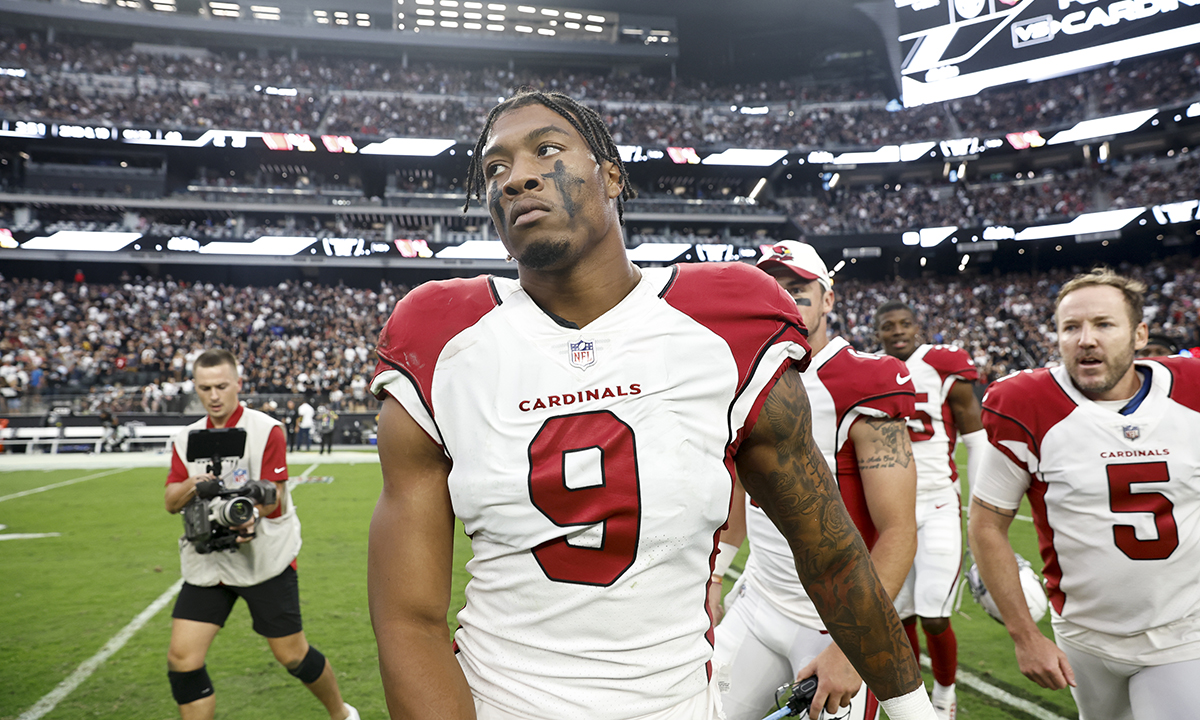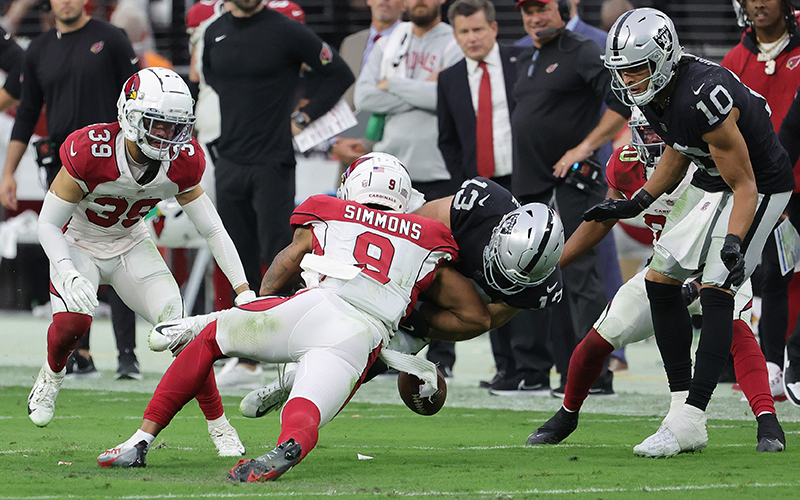The promise of dominant college play
The Frankenstein-built defender has experience at Star in the past. Former Clemson defensive coordinator Brent Venables, now the head football coach at Oklahoma, deployed Simmons in a variety of fashions during the 2019 season. Simmons played over 100 snaps at five different positions and became one of the best defenders in college football. He was a true chess piece who altered schemes with his presence.
“Clemson put Isaiah Simmons in space a lot,” Sikkema said. “They allowed him to cover all sorts of ground, both before and after the ball was thrown. And when he was playing linebacker, he basically had one job. In a lot of his linebacker clips, he was screaming downhill, blitzing, trying to block shed, all that stuff.
“So, when Simmons was playing linebacker in college, it felt like there wasn’t a lot of thinking that he even needed to do, whereas a lot of his coverage value work came in a lot more space. It came from the slot position. It came from the safety position. That’s something that the Cardinals are clearly searching more for.”
The tape speaks for itself. Simmons registered 102 tackles, eight sacks, and three interceptions as a mobile wrecking ball for Clemson in 2019. He was the sixth unanimous All-American in school history. He earned ACC Defensive Player of the Year honors and won the Butkus Award, given to the nation’s top linebacker.
Smith played weakside linebacker for the Tigers at the same time as Simmons. He was able to witness firsthand the extraordinary athlete who could track down quarterbacks on one play, then blanket receivers on the next.
“He’s a freak,” Smith said of Simmons. “His size and speed, athleticism, quickness, even his strength, those are just complete outliers for the Star position. You don’t see anybody in the NFL or even in college football who looks like that and are able to do the things that he does.”
via GIPHY
Simmons has tremendous speed for his size to close on targets, which he used effectively on blitzes. He single handedly blew up an obvious passing situation against Syracuse. Simmons aligned at strong safety on fourth-and-2 in the third quarter. His downhill speed and instincts of the play’s commencement allowed him to thump the quarterback swiftly after Clemson’s coverage took away the offense’s first read.
“Timing is very key on blitzes,” Smith said. “He was excellent at that. He was able to close that gap super fast. It’s all a testament to Isaiah understanding the quarterback’s mannerisms.”
via GIPHY
Even when rushing the quarterback from a slot cornerback position, Simmons proved he could generate enough power with a shortened acceleration to overwhelm blockers for sacks. Playing against North Carolina, Simmons made a ragdoll of current Denver Broncos running back Javonte Williams, who had good leverage in pass protection. Simmons powered through Williams to spearhead Sam Howell (now with the Washington Commanders) without any severe loss of momentum.
“This was simply Isaiah Simmons being bigger and stronger than some other guy,” Sikkema said. “It’s very impressive. I’m sure this is the kind of play that really intrigued the Cardinals.”
Simmons pairs his intangible speed and length well. He has an easier time disrupting throwing windows and challenging the accuracy of quarterbacks in coverage. His long strides eat up ground quickly, while his beanstalk arms further decrease the proximity to his target. The attributes also form an ideal combination for hunting the passer.
via GIPHY
“The FSU quarterback doesn’t even realize it because he thinks he has time,” Smith said. “But he’s just like, ‘Holy s—, this guy’s already on me. He was like 10 yards away.’ That’s what makes [Simmons] so awesome.”



